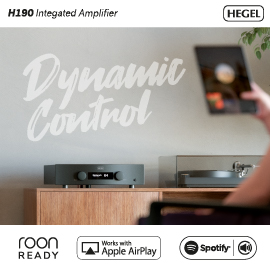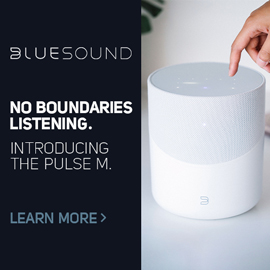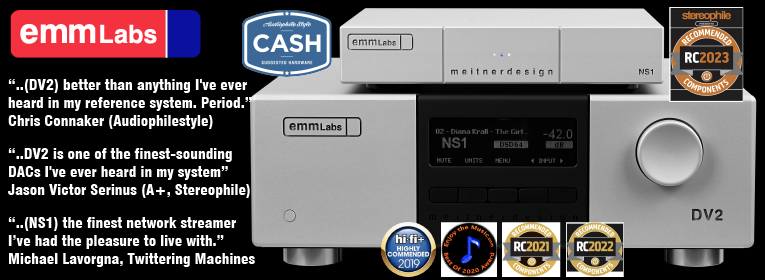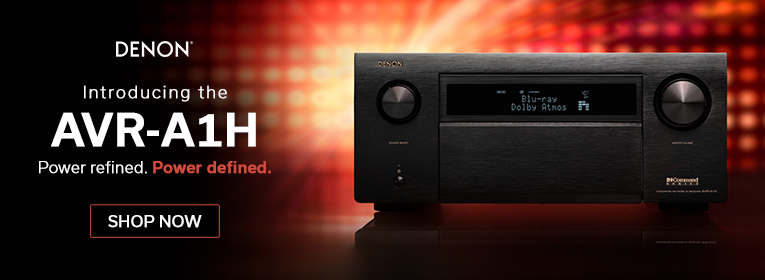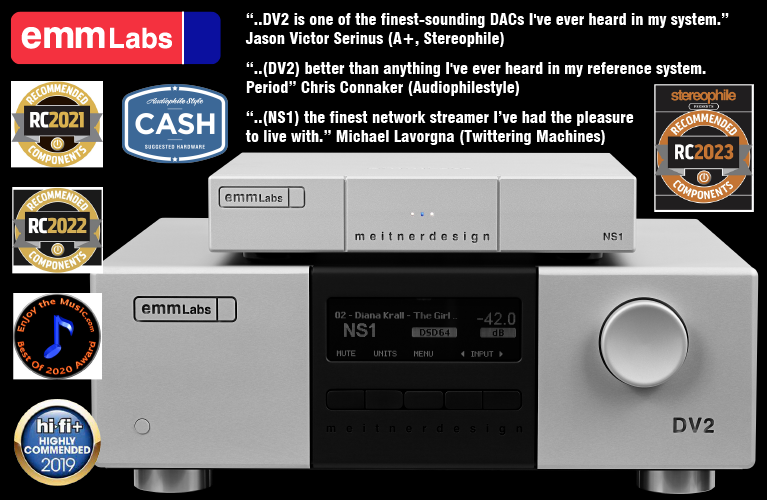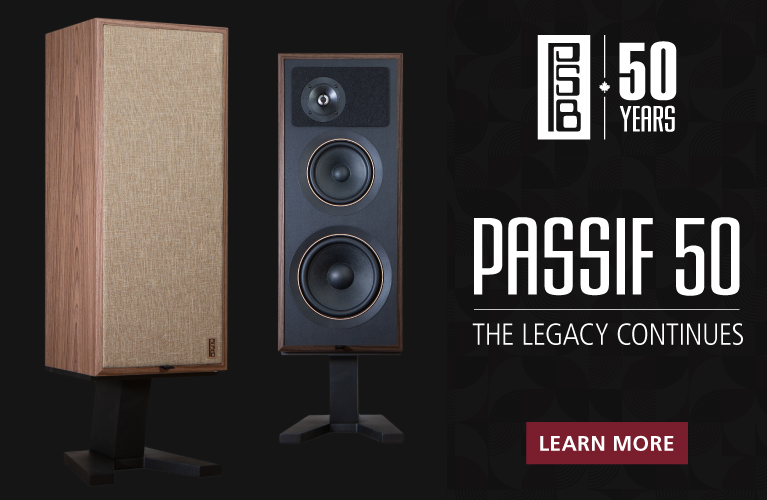 In the form of capitalism now dominant in the world, corporations ensure high profit margins with the planned obsolescence of the goods they make. Apple has sold tens of billions of dollars’ worth of newer versions of products that most of its customers already own. Most of us have become convinced that newer is always better, as the mountain of cash sitting in a secret lair in Cupertino will attest.
In the form of capitalism now dominant in the world, corporations ensure high profit margins with the planned obsolescence of the goods they make. Apple has sold tens of billions of dollars’ worth of newer versions of products that most of its customers already own. Most of us have become convinced that newer is always better, as the mountain of cash sitting in a secret lair in Cupertino will attest.
Audio technology has not seen the same degree of advancement as, say, mobile devices have; many audiophiles remain completely satisfied with old tech. My main reference system has remained largely unchanged for three years because I haven’t heard anything in that time that made me want to swap out gear. Now, thanks to the great customer service and questionable capitalism of Ayre Acoustics, that has changed.
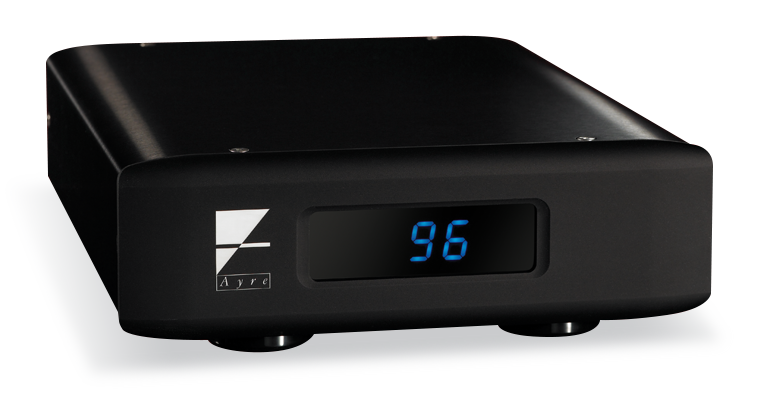
Even before December 2009, when Peter Roth reviewed Ayre’s original QB-9 D/A converter for what was then Ultra Audio, I knew I had to have it. When the USB-audio bandwagon still had square wheels, I’d jumped on it with a do-it-yourself HagUSB converter. I loved the freedom of computer-based audio, which essentially gave me a self-programmed radio station, but early versions of USB audio gear didn’t take full advantage of all that computers could offer. The QB-9 changed that. Not only did it offer fantastic USB conversion technology, in the form of Wavelength Audio’s asynchronous Streamlength software, it also packed in Ayre’s renowned expertise in D/A conversion.
I bought a QB-9 and never looked back. It did absolutely everything I wanted a USB DAC to do and did it exceptionally well. High-resolution 24-bit/192kHz recordings were reproduced with phenomenal clarity and life. Until Ayre’s Charles Hansen came up with a QB-10, I wouldn’t even think about an upgrade.
Here we are, six years later, and still no QB-10. There is, however, the new QB-9DSD ($3495 USD), whose name tells you it can play DSD files. While he was at it, Hansen also added an entirely new USB-conversion board, and the QB-9DSD replaced the venerable QB-9 in Ayre’s model line. Or did it?
Ayre has a policy of hand-delivering samples of its products to reviewers, so that the company can a) make sure that the reviewer actually understands a thing or two about audio, and b) ensure that the reviewer’s system is getting the most out of the review sample. The cynical among you might think that Ayre goes to such length and expense so it can butter up reviewers and create a good impression. Poppycock! No one at SoundStage! is so gullible as to fall for such a thing, and Ayre’s products need no help from the PR department to shine. But I digress.
Ayre’s Alex Brinkman arrived at my home one Sunday morning carrying a new QB-9DSD. We chatted for a while, and Brinkman told me some amazing things, chief among them that Ayre stands so firmly behind its products that it often offers upgrade paths for people who have bought earlier models. The QB-9DSD is the second upgrade of the original QB-9 (the first was an update that added 192kHz capability). So not only is the QB-9DSD available as a new model, its full capabilities are also easily available to owners of the QB-9.
And here is where I question Hansen’s capitalist credentials. Does it make good business sense to forgo the revenue of a new sale, and instead use scarce production resources to do upgrades? An accountant would almost certainly answer “no!” That bean counter would be aghast to learn that it takes far longer (and therefore costs more money) for Ayre to upgrade an earlier QB-9 than to make a new one. So Ayre not only forgoes revenue by not trying to sell more new QB-9DSDs to owners of QB-9s, its upgrade policy actually adds cost. It’s madness. It’s also why Ayre has so many loyal customers.
What makes a QB-9DSD different from its predecessors is absolutely everything inside it. Compare the circuit boards of an original QB-9 with those in the QB-9DSD and you’ll see that they’re completely different. The DSD upgrade is far more than a simple swap of chip or tweak of clock: the circuitry on the D/A board is completely new. So is the USB board, which now supplies its own clean USB power instead of drawing juice from the attached computer. Just about the only electronic part the QB-9 and QB-9DSD share is the front panel’s dimmable digital display.
It’s editorial policy here at SoundStage! to cite the price when a product is first mentioned. By that standard I should have told you by now what Ayre asks for the QB-9DSD upgrade, but I’ve deliberately left you in suspense. The number is $700. I’ll write it out, check style, so you know it’s not a typo: you pay exactly seven hundred dollars. I understand if you need a moment to compose yourself before reading on.
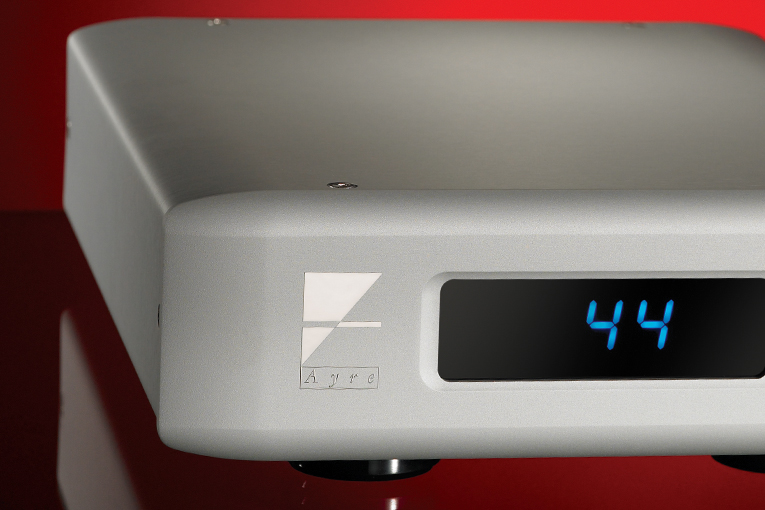
The redesigned QB-9DSD still uses the asynchronous transfer mode for USB input, which still accepts PCM signals of sample rates of 44.1, 48, 88.2, 96, 176.4, and 192kHz -- and now adds DSD at 2.8224MHz (aka DSD64). It has a minimum-phase digital filter, single-pass 16x oversampling, zero feedback, and fully balanced discrete circuitry. The last means no dreaded op-amps. The claimed signal/noise ratio is a very healthy 110dB. Like the original QB-9, the DSD also features a built-in RFI filter, the Ayre Conditioner (ha ha). Also like the original, the QB-9DSD is a resolutely USB-only DAC built into a mostly aluminum case measuring 8.5”W x 3”H x 11.5”D -- a footprint barely larger than a sheet of typing paper. The QB-9DSD weighs just five pounds.
Setup
Like the original QB-9, the QB-9DSD was as simple as pie to set up. My present audio source, a dedicated Apple Mac Mini computer, instantly recognized the Ayre, which I simply selected as my preferred audio output under the Mac’s Preferences/Audio Midi Setup. I started up Audirvana, and that was it -- a far cry from the early days of computer audio, when pullings of hair and gnashings of teeth were essential parts of the experience.
Listening
The first thing I do after installing a review sample is to set it and forget it. I powered up the QB-9DSD and let it play 24/7 for a week. When those 168 hours were behind it, I sat down for a listen.
Actually, that’s not quite true. Merriam-Webster’s 11th Collegiate Dictionary defines cognitive dissonance as “psychological conflict resulting from incongruous beliefs and attitudes held simultaneously.” That’s what I experienced as I walked down the 30’-long hallway to my basement listening room. The lights were turned off, and as I entered the room I heard a piano being played. That’s weird, I thought. I don’t own a piano. I realized that I wasn’t hearing a live piano, but sounds from my speakers -- I’d left my system playing. I uttered an audible “Whoa!” and sat myself down for an extended and joyous listening experience.
If the QB-9 is great in every way, the QB-9DSD was . . . ah . . . er . . . stupendous! Damn these limiting adjectives! That doesn’t quite cover it. Amazingly stupendous? Spectacularly super? Stupidly good?

Remember when I said I’d never felt much need to upgrade my system? The QB-9DSD reinforced that notion while making a mockery of it. On the one hand, the rest of my system has never sounded better. On the other, without the QB-9DSD upgrade, I would never have known that I hadn’t reached the limits of what my system could do.
I listened to an old standby: The title track of Norah Jones’s Come Away With Me (24-bit/192kHz FLAC, Blue Note). Like that cognitively dissonant piano, Jones’s voice sounded spookily clean and natural. Had she been actually standing there, singing right into my ear, I’m not sure I’d have heard any more detail or air or depth. But for the absence of her breath tickling my ear hairs, I could have sworn she was right next to me. At such times I wonder just how much better audio reproduction can possibly become, or how much more a very expensive system might wring from a recording. If a moderate system such as mine can sound this good with the QB-9DSD, who cares?
Pregnant women may have inexplicable food cravings -- I have lately found myself a slave to crunchy guitar riffs from 1980s heavy metal. One fave is the opening of the title track of Accept’s Balls to the Wall (16/44.1 FLAC, Portrait/Epic/Legacy). It’s surprisingly well recorded -- or maybe not, considering that the band is German. There was a palpable sense of presence, or realism, as if I were sitting in the recording studio. The noise floor was simply undetectable -- something I’d never heard before when using my Simaudio Moon i5.3 integrated amp. When music erupts from a black void of silence, the listening experience can be magical, and this most certainly was.
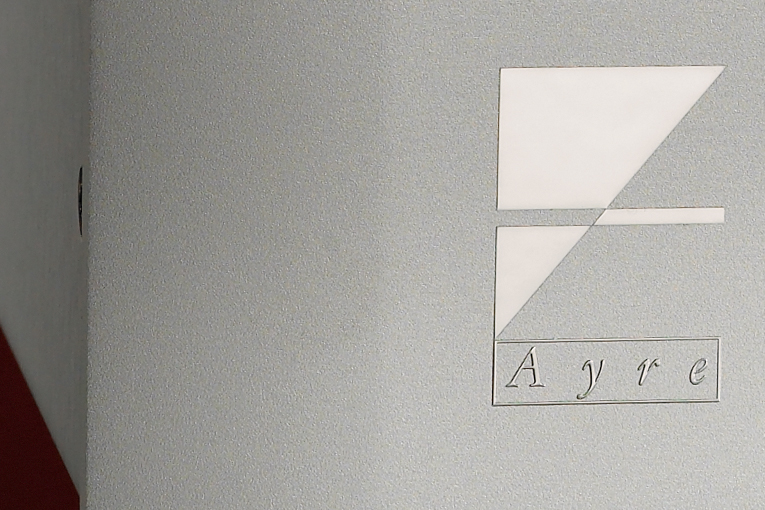
I love a good violin piece, so I tried Mozart’s Violin Concerto No.4 in D Major, K.218, as performed by Marianne Thorsen, accompanied by Oyvind Gimse conducting the Trondheim Soloists (DSD64, 2L 38). I was quickly seduced by Thorsen’s heavenly playing. This is a wonderful recording, and in DSD64 it’s no less than enthralling. I’ll say about the recording what 2L says about Mozart: “As solid as rock, as soft as snow, and as clear as ice.” This recording drew me in and gave me a virtual private session with the players, one in which the sound was pure. And owing to 2L’s recording technique, there was never a danger of a cough or a cell phone to ruin the experience. Although this review isn’t about comparing DSD and PCM, I did, for completeness’s sake, download the 24/192 PCM version of the same track, and heard very minor differences. I thought the 24/192 version was a bit sharper in the highs, but otherwise the two formats sounded identical.
Comparison
What better to compare with the QB-9DSD than Ayre’s original QB-9? Per Ayre’s request, I’d kept my QB-9 plugged in so that its circuits would be good and ready. But if I were Charles Hansen, I’d have followed the philosophy of “if it ain’t broke, don’t fix it.” Because I’d had no beefs at all with the QB-9’s sound. In fact, I hadn’t thought it could be improved on.
Well, it’s a good thing I don’t design audio equipment. Maybe Ayre should rename the QB-9DSD the “QB-9 Plus” -- everything the original QB-9 gives, the QB-9DSD gives more of. Or less. More clarity, less veiling (which I’d never known was there). More depth: vertiginous, Norwegian fjord depth. Less constriction of the soundscapes -- which, again, hadn’t sounded constricted before, but now were less so. Anyone who’s ever put on a new pair of eyeglasses and suddenly realized that it had been a long time since they’d seen anything clearly will know the sort of difference I’m talking about.
Among my favorite musical ensembles is the jazz piano trio. A lot of that favoritism is because, with so few players, I can distinctly hear what each is doing. What I heard through the original QB-9 when listening to “Blues for Stefanie,” from the Jeff Hamilton Trio’s Hamilton House: Live at Steamers (16/44.1 AIFF, Mons), was a boisterous, playful, live recording. What I heard through the QB-9DSD was a live performance: calloused fingers sliding over bass strings, Hamilton yelling “Yeah!” and “Alright!” and sounding as if he were sitting at his drum kit right in front of my table. His ride cymbals were so clear through the QB-9DSD that it was easy to hear not just the sound of stick striking metal, but where on the cymbal it struck. No element of the sound was too much or too little -- all was just right.
Conclusion
Mother Smith didn’t raise any stupid sons. This one is paying the upgrade fee to keep the QB-9DSD in his audio system. I’m sure that won’t make me the most popular guy with Ayre Acoustics’ counters of beans, so I’ll recommend in the strongest terms that some of you buy a brand-new QB-9DSD. When a component raises the bar as much as the QB-9DSD did in my system, I think I’d sell a kidney to keep it. So far that hasn’t proved necessary, and at the $700 upgrade price I won’t have to sell even an eyelash. Even its full price of $3495 is too good for the QB-9DSD to long remain on store shelves -- and there’s a pretty good chance that when Charles Hansen comes up with another improvement, it can be yours for a song.
. . . Colin Smith
colins@soundstagenetwork.com
Associated Equipment
- D/A converter -- Ayre Acoustics QB-9
- Integrated amplifier -- Simaudio Moon i5.3
- Sources -- Apple Mac Mini running Audirvana music-player software
- Speakers -- Definitive Technology Mythos ST
- Power conditioner -- Blue Circle Audio BC 86 Mk.II
- Speaker cables -- Synergistic Research Galileo Universal Speaker Cells and Basik speaker leads
- Interconnects -- Analysis Plus Copper Oval-In
- Digital cable -- Cardas Clear USB cable
Ayre Acoustics QB-9DSD Digital-to-Analog Converter
Price: $3495 USD (upgrade from 24/192 QB-9, $700; upgrade from original 24/96 QB-9, $950).
Warranty: 90 days, basic; five years with free product registration.
Ayre Acoustics, Inc.
2300-B Central Ave.
Boulder, CO 80301
Phone: (303) 442-7300
Fax: (303) 442-7301
Website: www.ayre.com





